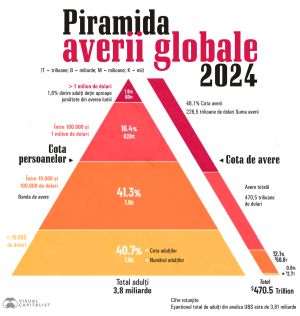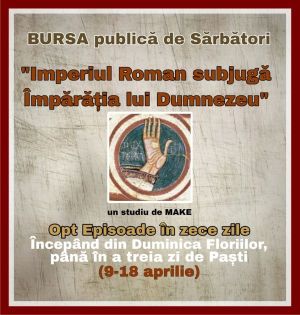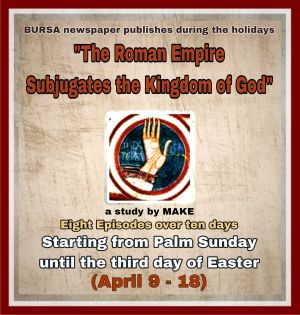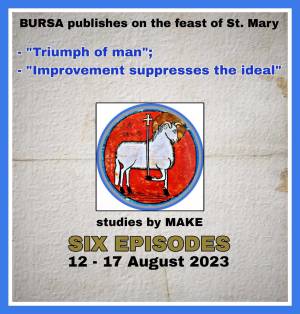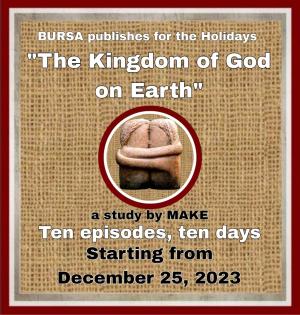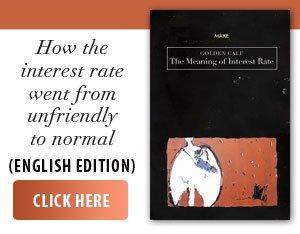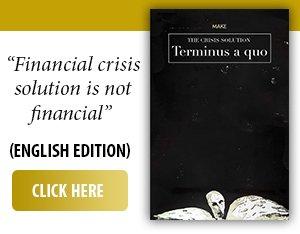With the last of the pairs (zugot), Hillel and Shammai - "The Fathers of the World," as the Talmud rightly calls them (see Appendix 1) - this essay descends from the sacred realm of Scripture, which, through the means of perfecting a holy book, has made it evident how humanity advances in the divine nature of God's Commandments. And further tracing the evolution of this emancipation, it somewhat descends into history, where the deeds that illustrate the social appropriation of the Commandments no longer have a mystical charge in themselves, being recorded under the presumption of realism and having direct economic and political connotations.
Politics closes its own ring of evaluation and criticism of gestures, a perimeter of vehemence and militant confrontation that would not have been appropriate before on the terrain of Scripture. Behind it is what Marx called the "class struggle," and it would be convenient to stick with this label, the case of the clashes at the beginning of the first millennium within Judaism regarding the divine Commandments being paradigmatic for Western history in politics and economics, adding an unexpected meaning to the idea of democracy inherited from the ancient Athenians.
The image of this transgression of the Book towards the interface of confrontation invokes weights: just as biblical stories often find correspondences in history (which can be the pretext-source for the sacred text), so in post-biblical histories there are reverberations of sacred echoes that lose their origin as Babylonian secularization progresses (in Romanian, the synonym of the word "chaos" is "Babylon"). However, for now, we read that the Babylonian Hillel lived to be 120 years old.
The year of his death - 10 AD - is universally accepted, but the year of his birth is controversial; is this age a historical one or a traditional one? This question frequently arises at the end of the stories that relate his life, indicating that literary processing is a solvent of factual information - they are hard to separate. The nebulousness of what we call "reality" increases if we accept Walter Benjamin's opinion, quoted in "Year 1: a philosophical recounting" (1), who spoke of the cultural treasures of the past as loot carried forward in history by the victors. Historians present Hillel as the winner.
Whoever writes "Hillel" in quotation marks is referring to Hillel without quotation marks (who appears more imprecise than the first). He has been called Hillel the Elder, Babylonian Glory, the Babylonian, as if he needed to be distinguished from his descendants with the name Hillel, who led the Sanhedrin for fifteen generations until the fifth century, guarding the Jerusalem Talmud until its completion. He has also been called Hillel the Elder, leading to confusion between him and his grandson, Hillel Gamaliel the Elder - can both the grandfather and the grandson be "the Elder"? More recently, those who have ignored history have called him "rabbi", although encyclopedias state that the title appeared in the Talmud after Hillel's lifetime - his grandson Hillel Gamaliel was the first to be called "rabban" (a derivative of "rabbi").
But in the text that simply mentions him - "Hillel" - we can be sure that it refers to Hillel and that, in fact, Hillel, besides being a person's name, is also used as a superlative. In fact, Hillel seems to be such a literary personality conveniently constructed to legitimize the social-economic organization based on credit, built in the tannaitic period (the beginning of the first millennium) and which later became susceptible to the temptation of interest.
The possibility that, to some extent (difficult to estimate), Hillel may be a character with traditional attributes, without historical correspondence, is irrelevant to Hillel's function as a legend, used as a justification for evading some divine commandments; its function is a historical reality, regardless of whether Hillel is somewhat imaginary.
As they say: "Someone standing behind the Ark cover should visualize themselves as if they were standing in front of the Ark cover..." (Berakhot 30a).
It is possible that, metaphorically speaking, his tradition has been processed just like Plato, in dialogues, assigning human faces and characters to ideas, in which case it may have been elaborated in the same way in the case of ideas contrary to those of Hillel, supported by his opponents, first Shammai, then Jesus Christ.
In the case of Jesus, the literary component of his character stems from the selection (under divine inspiration, as it is said) of the four accounts (from a large number of other Gospels that became apocryphal after the canonization of the New Testament), among which discrepancies have still been preserved. It is natural for these inadvertencies to appear in the narratives of four different authors (the discrepancies add reason why four Gospels should be canonized, rather than just one).
However, on the other hand, the Gospels present a different kind of literature than the Torah/Pentateuch - amidst the multiplicity of differences, one can be retained that subsumes the others: the Gospels cannot be conceived as an unceasing work of angels (in fact, the Gospels are explicitly attributed to humans), an idea compatible only with the Law given by God to Moses on Mount Sinai (2).
The literary character of the reports on the words and gestures of Jesus is implicitly asserted by academic hypotheses about "Q" - considered the common literary source for the Gospels of Matthew and Luke; about "M" - considered the specific literary source only for the Gospel of Matthew; about the "Book of Signs" - a hypothetical literary source for the Gospel of John (the Gospel of Mark is said to have used oral sources and possibly written sources, including the accounts of the apostles and other early Christian documents). They are, in any case, literary compositions.
Divine inspiration is not the same as dictation: in the case of divine inspiration, the word reconstitutes the fact, under sacred impulse, while writing under the dictation of God restores the sacred impulse itself.
In the case of the Torah/Pentateuch, the hypothesis of the author's infinite comprehension and perfection makes it meaningful for divine harmonization to be found for inadvertences; it is a literature with the status of independence from any mismatch, whether intracorporal, intercorporal or with what we call "reality", as it serves higher living, not any correspondence with anything else.
In the case of the New Testament, the discrepancies between the Gospels emphasize the earthly participation in the interaction with divinity, being compatible with the human accounts from different understandings and perspectives, revealed by the four canonized forms of the Good News.
The Old Testament is an inspiration for the New Testament.
Being aware that our image of the past is literary-derived, we can explore it without hesitation as history because that's what it has functioned as and thus become, so it's not a mistake to treat literary characters as historical personalities - coincidences are not accidental.
History sparks when the needs of time strike the flint of myths.
Encyclopedia Britannica writes about Hillel: "He is, in traditional accounts, the model of patience, and even when some try repeatedly to insult him, his serenity and civilization remain unaffected. He appears as a fervent supporter of peaceful conduct, a lover of all men, a diligent student, a convincing teacher, a cheerful man, and one with full faith in God. In short, he appears as the model of the ideal Jewish sage."
The following text is based on traditional accounts and modern and contemporary studies, and explores an alternative to the established apologetic view, such as that "complete faith in God" attributed to Hillel can be appreciated at best as "inconsistent faith" (if not "hypocritical atheism"); that far from being "a lover of all people," he can be considered to have served the wealthy; that from his position as Nasi, he can be interpreted as facilitating the transformation of the poor into slaves (contrary to God's Commandments); that he may have been a collaborator, a tool of King Herod the Great, whom he facilitated in his Hellenization policy and put his supreme religious authority at the service of the Roman occupier, against his own people.
Literary character or historical fabrication - the integrity of Hillel crumbles upon closer examination.
The calm with which, as it is said, he faced insults could be given a name contrary to "serenity": cynicism.
By reading this essay to the end, the reader will gain elements in favor of the literary opinion that Jesus Christ fought against Hillel and his teachings.
This struggle may explain (possibly, in addition to traditional explanations) the condemnation to crucifixion, especially since it seems to have been dictated by the Sanhedrin led by someone from Hillel's lineage - his grandson, Hillel Gamaliel.
The New Testament preserves a bright memory of Hillel Gamaliel, stating that he played a major role in the release of the apostles, but the Book did not record the role he may have played in the condemnation of Jesus.
In the end, the text of the essay will be obliged to advance the scenario according to which, after the execution of Jesus, the Christian movement received a decisive impetus from the one who gave him death - Hillel Gamaliel - orienting it against the teachings of Jesus and God's Commandments, through his disciple Saul/Apostle Paul/Paul.
In fact, Apostle Paul may have continued the orientation initiated by Hillel, thus repudiating the Law/Torah/Pentateuch (and implicitly attempting to suspend all of God's Commandments).
It will be seen how a world of freedom, to which the endeavor to fulfill the Law would have brought it closer to its needs, became utopian through the Hillelian diversion towards slavery, under the pretext of "repairing" it.
Note
(1) "Year 1: a philosophical recounting" / p. 210 / Susan Buck-Morss / Massachusetts Institute of Technology / 2021
(2) See "Justice and revolution, regarding homosexuality/Was God at Sodom? (1)" / MAKE / BURSA / January 5, 2022
https://www.bursa.ro/justitie-si-revolutie-apropo-de-homosexualitate-a-fost-dumnezeu-la-sodoma-1-29292541
Appendix 1
i) Zugot
Historians report that between 170 BCE and 30 CE, a period known as the rabbinic period of Zugot ("pairs," singular zug), the Sanhedrin (the Jewish religious authority composed of priests and scholars) adopted a dual leadership structure, adding a Nasi ("prince," a kind of president) of equal rank to the Ab bet din ("chief judge" - a function that existed before). The positions of Nasi and Ab bet din were maintained later on (but no longer as zugot). Hillel and Shammai were the last of the five zugot.
II) Fathers of the World
"And why do they record the insignificant opinions of Shammai and Hillel? To teach future generations that a man should not [always] persist in his opinion, for behold, the Fathers of the World did not persist in their opinion." (Mishnah Eduyot 1:4)
"But just as the Fathers of the World did not rely on their words based on rumors, all the more so today one should not rely on his own words based on rumors." (Tosefta Eduyot 1:2)
Note: The idea that the expression "fathers of the world" refers, according to some commentators, only to the establishment of the Rabbinic World, is (possibly) partial; the meanings in the Western world have their origins in the controversies between Hillel and Shammai.
III) Hillel
Hillel was born, according to tradition, in Babylon around 110 BCE; he died in 10 CE in Jerusalem; he was a Jewish religious leader, wise man, and scholar associated with the development of the Mishnah; founder of the House of Hillel interpretation, whose approach freed the law from a literal and strict interpretation.
IV) Shammai
Shammai ha-Zaken ("The Elder"), (born around 50 BCE - died around 30 CE), one of the most important Jewish sages in Palestine during his time, opponent of Hillel.
Disclaimer:
This essay proposes an interpretation that does not exclude the established ones, but only adds to them; the criticism it develops of some religious texts is nothing more than the criticism of texts; readers are cautioned that the author of the essay did not intend to undermine faith and is aware that this would not be a useful or achievable objective.


